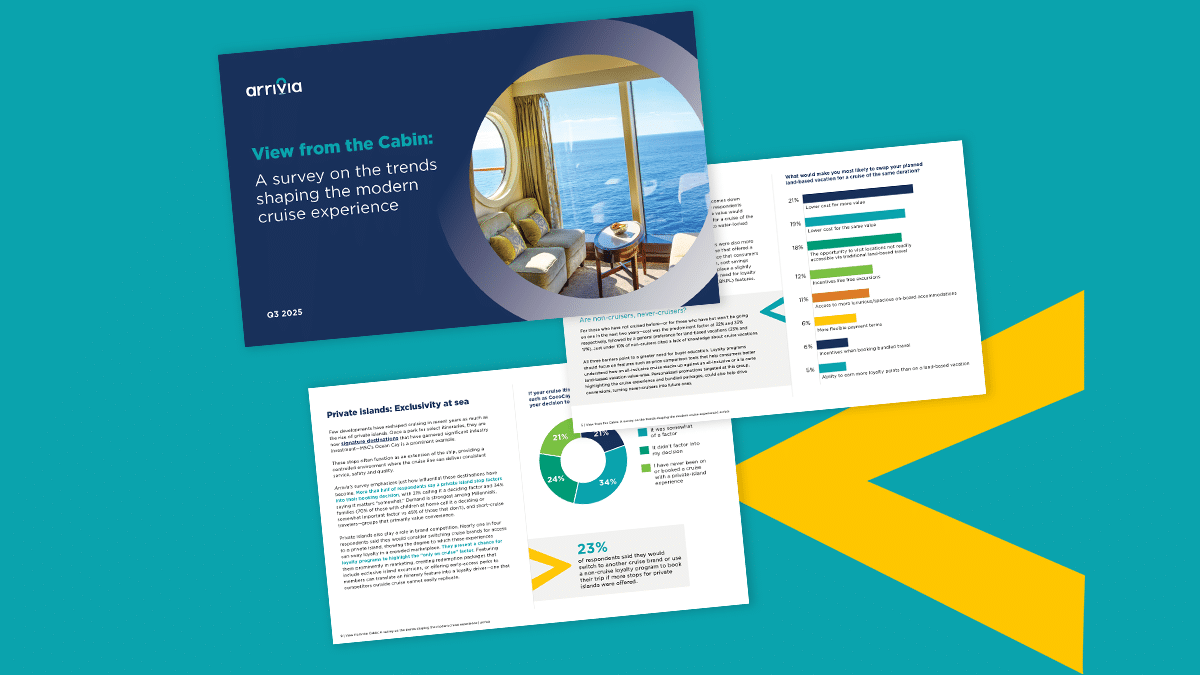For travel brands, acquiring a loyalty member is only the beginning. Sustaining engagement and encouraging repeat bookings is where the true value of a loyalty program emerges. Yet even your most loyal members may become inactive without consistent, relevant touchpoints.
Retargeting is a strategic approach to re-engagement—one that uses data, behavior insights, and personalized communication to remind members of the value your program provides. Whether reigniting interest after a lapsed interaction or encouraging a return visit following an incomplete booking, retargeting plays a crucial role in keeping your brand in mind and your members actively engaged.
When implemented effectively, retargeting transforms passive members into active participants, contributing to higher redemption rates, stronger customer retention, and increased revenue over time.
In this article, we’ll explore the most effective strategies for retargeting loyalty members, common challenges to avoid, and actionable ideas to help your program deliver measurable results.
Why Retargeting Loyalty Members Matters
Loyalty program members are often a brand’s most valuable audience. They’ve opted in, made purchases, and expressed a clear interest in staying connected, but even engaged members can go quiet over time. When that happens, travel brands risk losing future revenue and brand equity.
Retargeting allows marketers to reconnect with these members based on actual behavior—such as past bookings, search activity, or reward redemptions—and deliver relevant, timely offers that reignite interest.
Beyond improving conversion rates, retargeting enhances customer satisfaction by providing reminders, value-based opportunities, and experiences that feel tailor-made. For loyalty teams, it’s a direct path to maximizing the impact of your program investment.
What Gets in the Way of Effective Retargeting
While the opportunity is clear, executing an effective retargeting strategy can be challenging. Common obstacles include:
- Message fatigue: Members receiving generic, repetitive communications are more likely to disengage. Frequency matters, but so does relevance.
- Disjointed customer journeys: Travelers move between devices, platforms, and channels. Without a connected strategy, brands miss critical opportunities to re-engage across those touchpoints.
- Insufficient personalization: Communications that don’t reflect a member’s preferences or behavior are unlikely to resonate.
- Data silos: Retargeting depends on access to accurate, real-time data. Creating meaningful audience segments or responding to behavioral triggers is harder when systems aren’t integrated.
Overcoming these challenges requires a shift from one-size-fits-all campaigns to highly tailored experiences rooted in member behavior, preferences, and lifecycle stages.
Best Practices for Retargeting Loyalty Members
Effective retargeting is both strategic and precise. Here are some of the most impactful practices to implement or optimize.
1. Leverage Behavioral Triggers
The most successful retargeting efforts are driven by what members are actually doing—or not doing. For instance, if a member browses vacation homes in Hawaii but doesn’t book, that’s a signal. Following up with personalized offers, a savings credit reminder, or curated travel inspiration can help guide them back into the booking process.
Other common triggers include:
- Abandoned bookings
- Inactive loyalty points or credits
- Browsing specific destinations or travel categories
- Partial redemptions without a completed booking
These moments indicate interest and intent. Retargeting based on them helps your brand respond in real time with relevant, helpful communication.
2. Segment by Loyalty Tier and Travel Preferences
Members at different stages of the loyalty journey expect different types of engagement. A top-tier loyalty member may value early access to premium offers, while a new or lower-tier member might respond to entry-level incentives or bonus-point promotions.
Segmentation also allows for tailored content based on past travel behavior, such as preferred destinations, booking frequency, or product type (e.g., cruises vs. resorts). This level of personalization strengthens the relationship and makes every message feel more intentional.

3. Create an Omnichannel Experience
Today’s travelers engage across multiple channels. A strong retargeting strategy should extend beyond email to include SMS, app notifications, personalized web experiences, and even social media. The goal is to meet members where they are while maintaining consistency in messaging and brand voice.
For example, a member might receive an email highlighting a recently viewed cruise, then see that same offer—enhanced with a limited-time savings bonus—displayed in-app or as a mobile push notification. Consistent, contextually relevant experiences keep your brand at the forefront of your mind.
4. Use Value-Based Incentives
Savings credits, loyalty points, and exclusive offers effectively encourage re-engagement, especially when tied to urgency or personalized milestones.
Tactics to consider:
- Highlight expiring credits with reminders
- Offer double-value savings promotions tied to travel seasons
- Surprise members with rewards on their birthday or program anniversary
- Create limited-time campaigns with exclusive redemption opportunities
By emphasizing value and exclusivity, these incentives encourage members to return—and convert.
5. Enhance the Experience with Smart Technology
Artificial intelligence and automation can help personalize and scale retargeting efforts across channels. For example:
- Rate monitoring tools like arrivia’s RateRover can notify members when prices drop on a property they’ve viewed or booked previously.
- Itinerary planners, such as arrivia’s via, help members build personalized travel plans based on their preferences and schedule, making it easier to retarget them with relevant, ready-to-book experiences.
- Smart calendar tools can suggest ideal getaways based on a member’s available dates or upcoming milestones.
These technologies simplify the booking process and show members that your brand understands their travel goals and is proactively working to deliver better options.
Looking to elevate your re-engagement strategy? Arrivia’s white-label travel platform provides the tools and insights you need to personalize offers, automate retargeting, and drive meaningful results.
Designing Campaigns That Drive Re-Engagement
Effective retargeting campaigns are not defined by volume or frequency but by how well they reflect the member’s intent, needs, and lifecycle stage. To create lasting impact, campaigns must be contextually aware—grounded in behavior, informed by loyalty status, and delivered through preferred channels.
For example, a well-timed message following an abandoned booking is more than a reminder; it’s an opportunity to reaffirm the member’s interest and reduce friction in the decision-making process. Providing additional value, such as an exclusive savings credit or an assurance of flexible cancellation, can reframe the message from “you forgot” to “we’ve got you.”
For members approaching a loyalty tier threshold, re-engagement can be a progress notification or a reward preview. Rather than offering a generic promotion, show them what they’re about to unlock. This tactic builds anticipation and reinforces the tangible benefits of continued participation.
Occasions like birthdays or membership anniversaries present additional re-engagement opportunities. Personalized gestures—surprise offers, bonus points, curated travel suggestions—demonstrate that the brand understands and values the individual behind the membership.
More broadly, seasonal or lifestyle-based retargeting campaigns can align with where members are in their travel mindset. A family preparing for spring break, a solo traveler eyeing a last-minute escape, or a retired couple looking for long-stay options—each presents a unique moment to deliver relevance, not noise.
Measuring What Matters
Quantifying the success of retargeting efforts requires looking beyond clicks and opens. These top-line metrics have value, but the real insights come from tracking what members do after they engage—and how those actions contribute to broader business goals.
Key indicators include:
- Rebooking rates from previously inactive members
- Redemption of savings credits or loyalty points
- Increase in average booking value post-retargeting
- Frequency of repeat bookings
- Churn reduction over time
It’s also important to measure how members engage across channels. A retargeting campaign may begin with an email, continue through mobile notifications, and convert through the app or website. Integrated analytics allow brands to see the complete journey and optimize accordingly.
Ultimately, retargeting success is about more than just immediate conversions. It’s about increasing member lifetime value, strengthening brand loyalty, and creating a program that feels indispensable.
Sustaining Loyalty Through Strategic Engagement
Loyalty doesn’t end when a member joins; it’s maintained through consistent, thoughtful, and personalized engagement. Retargeting offers a powerful way to reconnect with members in meaningful moments, turning hesitation into action and interest into long-term brand affinity.
A trusted partner can make all the difference. Arrivia equips businesses with the tools to identify key member behaviors, personalize outreach across channels, and deliver offers that feel both timely and relevant. From intelligent automation to real-time pricing intelligence, arrivia helps loyalty programs scale their retargeting efforts without sacrificing personalization.
As travel expectations evolve, the brands that lead will not only understand their members but continue to show up for them strategically and with purpose. Arrivia is built to support that promise.
Ready to create a smarter, more connected retargeting strategy? Discover how arrivia can power your loyalty program.



